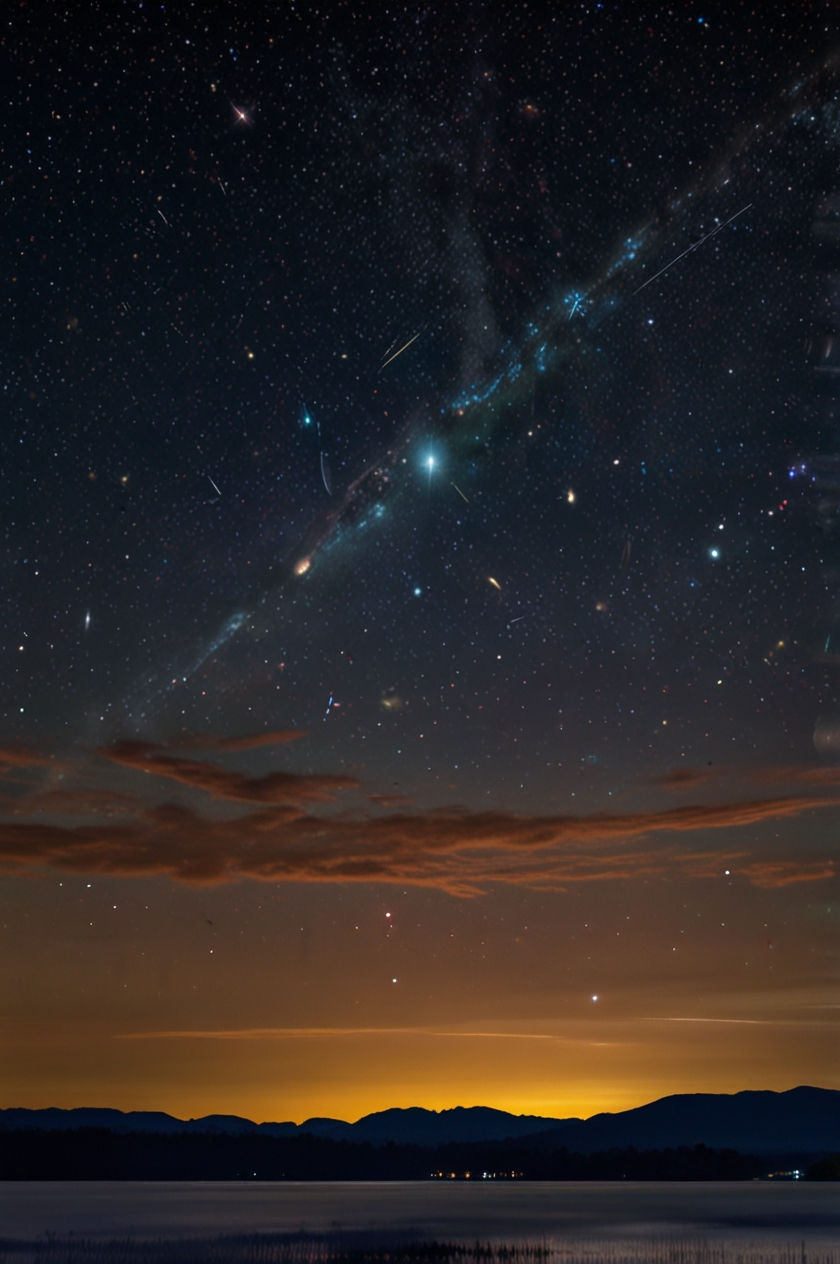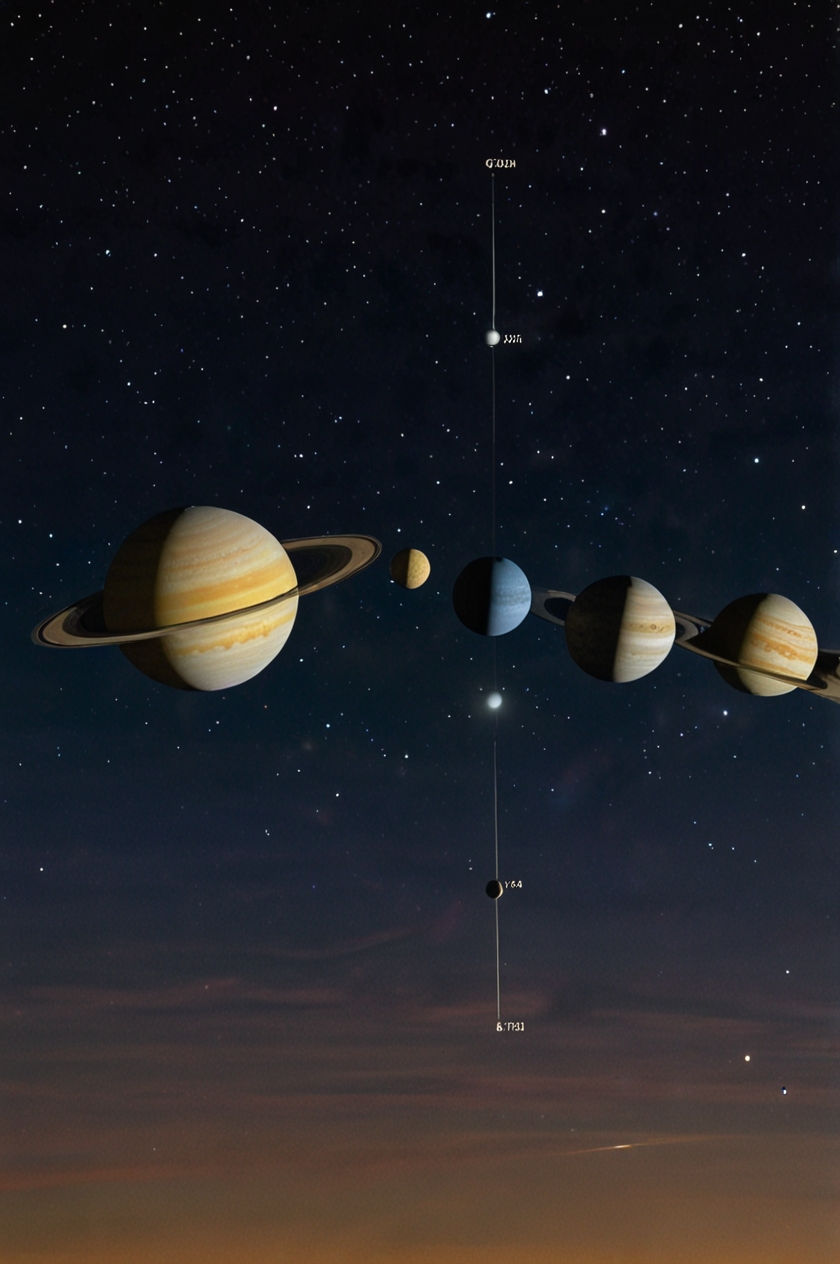The Planetary Parade Begins Today!
- AI it News

- 6 days ago
- 6 min read
A Celestial Spectacle You Cannot Afford to Miss

"Somewhere, something incredible is waiting to be known." — Carl Sagan
Imagine a canvas stretched across the pre-dawn sky, painted not with earthly hues, but with the shimmering jewels of our solar system. For a fleeting four days, from August 17 to 20, a rare and breathtaking celestial ballet will unfold before our very eyes: a grand planetary parade featuring six of our solar system’s majestic residents—Mercury, Venus, Jupiter, Saturn, Uranus, and Neptune—lining up in a spectacular cosmic display. This isn't merely an astronomical event; it's an invitation, a profound opportunity to reconnect with the universe and witness the sheer, undeniable majesty of our place within it.
This extraordinary alignment is not just a treat for seasoned astronomers but an accessible wonder for anyone willing to cast their gaze eastward before sunrise. It’s a chance to witness the intricate mechanics of our solar system playing out in real-time, a silent, powerful testament to the precision and grandeur of the cosmos. As the world awakens, you could be among the privileged few to witness a scene that has moved humanity for millennia.
What is a Planetary Parade, and Why is This One Special?
While planets are always orbiting the Sun, their unique speeds and paths mean that they rarely appear to line up perfectly from our vantage point on Earth. A "planetary parade" or "alignment" occurs when multiple planets appear in the same general area of the sky, forming a line or cluster. It’s an optical illusion, of course, as they are still millions of miles apart in their respective orbits, but from Earth, the effect is mesmerizing.
What makes this particular event from August 17 to 20 exceptionally rare and compelling is the sheer number of planets involved – six of them – and their relative visibility. Such conjunctions, especially involving so many distant worlds, are not a regular occurrence. They offer a unique snapshot of our solar system’s architecture, reminding us of the vastness and dynamic beauty of the space we inhabit. The added presence of a slender crescent Moon will only amplify the enchantment, acting as a delicate celestial punctuation mark to this grand cosmic sentence.
Your Cosmic Itinerary: The Stars of the Show
To catch this magnificent procession, you'll need to wake early – approximately 45 minutes before your local sunrise, and direct your gaze toward the eastern horizon. The window of visibility is brief but intensely rewarding. Here's a rundown of who's who in this celestial lineup:
Venus: Your undeniable guiding light. This brilliant jewel, often called the "Morning Star," will be the brightest object in the pre-dawn sky, impossible to miss. Its piercing brilliance will serve as an anchor, helping you locate the other celestial bodies.
Jupiter: The majestic giant, visible to the naked eye as a bright, steady beacon not far from Venus. Though smaller than Venus from our perspective, its steady glow speaks of its immense size and power within our solar system.
Saturn: The ringed jewel of the solar system, also visible to the naked eye, though appearing fainter than Jupiter. Its subtle, yellowish glow hints at the breathtaking ring system that has captivated astronomers for centuries. While you won't see the rings without magnification, knowing they are there adds to its allure.
Mercury: The elusive innermost planet, hugging the horizon. You'll need a clear view and perhaps binoculars to catch this speedy world as it peeks above the horizon. Its quick movements make it a challenging but rewarding target.
Uranus & Neptune: These distant ice giants will require the aid of binoculars or a telescope to reveal their faint, bluish glows. They will appear as tiny, star-like points, but the knowledge that you are observing worlds billions of miles away, beyond the reach of the naked eye, is a humbling experience in itself. Identifying them might require a star chart or an astronomy app to pinpoint their exact location relative to the brighter planets.
The Crescent Moon: A delicate, ethereal companion, its gentle glow will add to the magical ambiance, completing a truly unforgettable tableau.
Why This Matters: Beyond the Spectacle
This planetary parade is more than just a beautiful sight; it's a powerful catalyst for wonder, education, and perspective.
Igniting Curiosity: For children and adults alike, witnessing such an event can spark an enduring interest in astronomy, science, and the vastness of the universe. It transforms abstract concepts into tangible, awe-inspiring realities.
A Sense of Perspective: Gazing upon these distant worlds, aligned in a cosmic dance, offers a profound sense of our place in the universe. It reminds us of the intricate, elegant mechanics governing our solar system and the sheer improbability of our existence on this blue marble, hurtling through space.
Connecting with the Past: Humanity has looked to the stars for guidance, inspiration, and knowledge since time immemorial. By witnessing this event, you join a timeless tradition of sky-watchers, connecting with ancient civilizations who charted these same movements and marveled at their regularity.
The Call to Observe: In our increasingly digital world, it’s easy to lose touch with the natural rhythms of the universe. This parade is a powerful invitation to step outside, breathe the cool pre-dawn air, and engage with the natural world in its grandest form. It’s a reminder that some of the most profound experiences require only our presence and an open mind.
Your Guide to Observation: Maximizing the Experience
To ensure you make the most of this fleeting opportunity, preparation is key. Here’s how you can optimize your viewing experience:
Preparation is Key:
Check Local Sunrise Times: The "45 minutes before sunrise" rule is crucial. Use a reliable weather app or website to find your exact sunrise time for August 17-20.
Scout Your Location: Find a spot with a clear, unobstructed view of the eastern horizon. Avoid tall buildings, trees, or hills. Dark skies, away from city light pollution, will significantly enhance your view, especially for Mercury, Uranus, and Neptune.
Dress Warmly: Pre-dawn hours can be surprisingly chilly, even in August. Layer up to stay comfortable.
Bring a Red-Light Flashlight: If you need light, use one with a red filter. White light can ruin your night vision for up to 20 minutes.
Patience is a Virtue: Give your eyes time to adjust to the darkness. The fainter planets will become more visible as your eyes adapt.
Tools of the Trade (and what they reveal):
Naked Eye: You'll easily spot Venus (the brightest), Jupiter, and Saturn. They will be undeniable points of light.
Binoculars (7x50 or 10x50 recommended): These are your best friends for this event. They will bring Mercury into clearer view (if your horizon is clear enough) and are essential for spotting Uranus and Neptune as faint, star-like dots. They will also enhance the visibility of Jupiter and Saturn, making them appear larger.
Telescope: If you have one, a telescope will offer the most detailed views. You might be able to discern Jupiter's major moons, Saturn's majestic rings, and potentially even the faint discs of Uranus and Neptune, revealing their distinct colors.
Star Chart App/Website: Use an astronomy app (like SkyView Lite, Star Walk 2, or Stellarium Mobile) on your smartphone or a printed star chart. These can help you pinpoint the exact location of the fainter planets relative to the brighter ones.
Step-by-Step Viewing:
Locate Venus: It will be the first and brightest object to catch your eye.
Scan for Jupiter and Saturn: Look for these brighter planets in the vicinity of Venus.
Find Mercury: Scan the horizon directly below the brighter planets with your naked eye, then use binoculars if needed.
Pinpoint Uranus and Neptune: Refer to your star chart or app to guide your binoculars/telescope to their positions relative to Jupiter and Saturn. They will appear as very faint points of light.
Spot the Crescent Moon: It will be a beautiful addition to the celestial scene.
Take a Moment to Absorb: Don't just tick off the planets. Spend time simply observing, breathing, and experiencing the profound silence and beauty of the cosmic show.
The Enduring Legacy of the Night Sky

In an age dominated by artificial light and digital screens, the simple act of looking up at the night sky remains one of humanity's most profound and accessible pleasures. Events like this planetary parade are crucial reminders of the incredible universe beyond our immediate world. They foster a sense of awe, encouraging us to ask bigger questions and appreciate the delicate balance that allows life to flourish on our planet.
Should weather conditions not cooperate in your specific location, don't despair! Many observatories and amateur astronomers will be live-streaming the event online. While not the same as direct observation, it offers an alternative way to witness this remarkable alignment.
The six-planet parade, joined by a crescent moon, is a fleeting yet powerful spectacle. It's a chance to witness something truly special, an opportunity to connect with the cosmos in a tangible way, and a reminder of the endless wonders that await discovery. Do not let this moment pass you by. Set your alarm, find your viewing spot, and prepare to be utterly captivated. The universe is putting on a show, and your ticket is simply to look up. Be there to witness the magic.




Komentáře